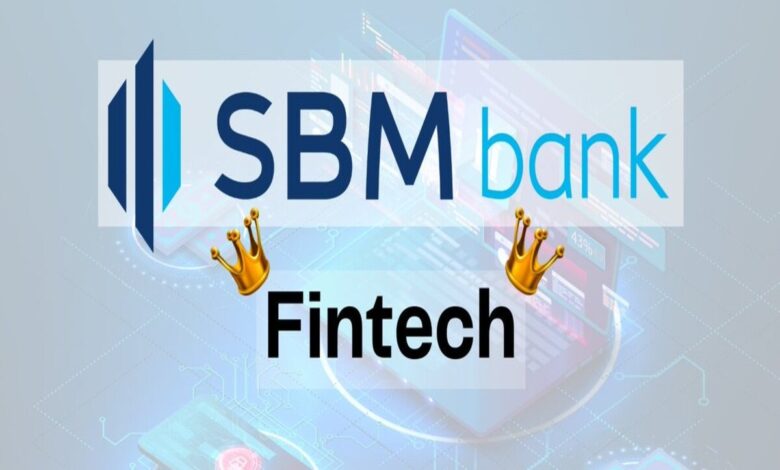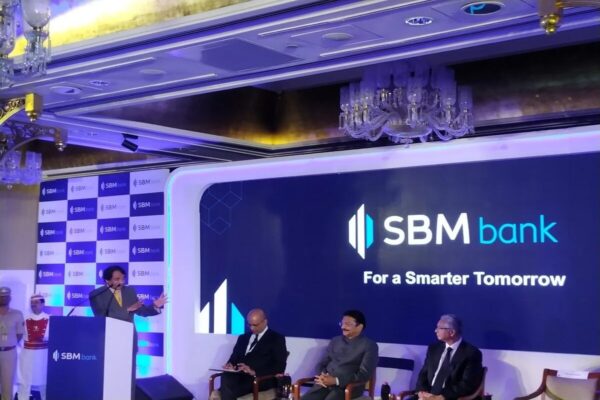The Exciting Story Of SBM: How It Went From Obscure Banking Institution To Fintech Darling

The Tragic Story Of SBM: How It Went From Obscure Banking Institution To Fintech Darling
After the Reserve Bank of India (RBI) announced to all non-bank PPI (pay-as-you-go instruments or wallets) licence holders in a letter that PPIs cannot be burdened with credit card debt in June, an odd thing happened. Despite the reality that the regulator had not specifically mentioned financial institution PPIs in its round, a number of banks made the decision to halt. Some said that a thorough analysis of the RBI’s general procedures prohibited even bank PPIs from loading credit lines.
How do they compare? Only SBM India was an exception. Bank and fintech company representatives have publicly said that they expect SBM India to consistently deliver the fintech sector with access to their PPI BIN. Even more recent fintech startups, like Kissht, were tried to bring in to work together on a project.
Three senior fintech executives attested to SBM’s claim that the regulator had “unofficially” advised them to move forward with this venture. When Mint asked SBM about this claim through email, SBM didn’t respond. A founder of a fintech company in Bengaluru stated that his company decided against working with SBM India because they “felt it was a regulatorily weak financial institution.” He wrote to the financial institution despite the RBI regulations constricting the fintech space because it was “the one sport in the town.”
However, the bank finally informed its partners in a statement sent on August 17 that it would no longer be onboarding new consumers for PPI. SBM declined to comment when asked why it continued the pay-as-you-go card business when other banks stopped, as well as what caused it to change its mind. The deeper mystery is how a banking organization without Indian roots, branding, or visibility became the “only game in town” for fintech.
The fintech approach

SBM Bank (India) Ltd. is a step-down subsidiary of SBM Holdings Ltd., a company that is listed on the Mauritius Stock Exchange and supported by the Mauritius government. Despite Pravind Kumar Jugnauth, the prime minister of Mauritius, inaugurating the financial institution with a “big bang,” little interest was generated. The tipping point came with the Sure Financial institution’s bankruptcy in 2020. A former SBM Bank official who wished to remain anonymous said that “SBM’s Indian administration noticed this as an immense alternative [to enter the fintech market].
According to a second former SBM Bank official, SBM entered the market in the 1990s as an Indian branch of its parent company in Mauritius, but it failed to establish a reputation. I was unaware that there was a State Bank of Mauritius in India before I joined them.
As a result, they presented themselves as a fresh competitor. The original idea of becoming a premium bank was abandoned. The second official remarked, “After 2020, they went and cooperated with fintech. Instead of investing in branches and competing for consumers with behemoths like the State Bank of India, SBM saw fintech as a cost-effective client acquisition strategy.
Neeraj Sinha and Girish Parpillewar are in charge of SBM Bank’s fintech strategy. Parpillewar, who answers to Sinha, is the senior vice president at SBM, where Sinha is in charge of the retail and consumer banking sector.
“All of the commodities, collaborations, arguments, and agreements are driven by Neeraj.” According to the above-mentioned second official, Girish, the head of prepaid cards, is implicated. Compared to last year, when Sinha and Parpillewar were the only two managing the bank’s fintech partnerships, there are today roughly four employees working under Parpillewar. On LinkedIn, Mint contacted both; Parpillewar suggested the bank’s corporate communications, but they didn’t answer. Sinha remained silent.
The wagers seem to have won. The bank’s overall net worth climbed from 599 crores on March 31, 2021, to 715 crores on March 31, 2022, much beyond the regulatory threshold of 500 crores. This was mainly brought on by the parent’s infusion of $100 million in FY2022.
The selling point

All routes for startups are headed toward SBM. “Long onboarding procedures are necessary for ICICI Bank, HDFC, and Yes Bank. The second official estimated that it would take around 6-7 months from conception to market debut. Additionally, larger banks are pickier about the partners they work with. There was nothing of the sort at SBM. You might have a good idea and be a typical startup.
In that case, you could come, pay SBM, and launch your product. At most, two to three months would pass between integration and going live. In a month, we have even gone live,” the second official claimed. When Mint enquired about SBM’s overall fintech strategy, SBM did not react.
With the help of M2P Fintech, a business that provides API (application programming interface) infrastructure, the bank has given certain well-known fintech, including Slice, Uni, and Lazypay, the ability to issue credit lines on its PPI. The cooperation between SBM and M2P, in which M2P handles platform work for the fintech, is significant. On the market are various providers of API infrastructure, including Happay, Zeta, M2P, Decentro, and Card91.
Fintechs are not approached by the bank and are asked to work with them. ‘the infrastructure suppliers go to a fintech and say that we work with 2-3 banks and based on your volume, we would place you on one bank,’ said the founder of a fintech NBFC who was introduced to SBM through M2P. As a result of Yes Bank’s higher rates, he recalled picking SBM instead of them.
SBM keeps the one-time setup fee (between 1 and 5 lakh) for revenue lines from PPI fintech. The primary revenue line, or MDR, is slashed in the interchange (merchant discount rate is a cost that is charged to merchants for processing debit and credit card transactions).
According to a number of reports, this fee, which ranges from 1.75 to 1.9% of the transaction cost, is divided between the card networks like Visa, Mastercard, and Rupay (0.2%), SBM (0.8-1%), M2P (0.1%-0.5%), and the fintech (0.4%-1%). Though it occasionally varies, the split between the bank and the fintech is almost equal. When Mint asked the bank how it searches for fintech collaborations or for information on its income streams and revenue sharing, the bank did not respond.

At the beginning of last year, the bank worked on pre-paid goods with 1-2 fintech per month, the second official shares. The majority of prepaid card firms “came to SBM slowly and steadily.” SBM has roughly 18 collaborations across product lines through M2P, of which 7-8 are on hold. They are also issuing credit cards in collaboration with some struggling fintech; one such fintech is Uni, according to a person with knowledge of the situation, who spoke to Mint.
The majority of entrepreneurs concur that SBM has more partnerships since it is eager to work with even the smallest fintech. RBL Bank and Yes Bank have traditionally been far more receptive to collaboration. They started to have a volume cut-off because they were so successful.
The banks will therefore state, “I want to make this much money from you (the startup) in a year.” The fintech NBFC founder previously mentioned stated, “Either you give that much in my hand or you guarantee that I will generate that much money through this collaboration.”
Because they had their own customer acquisition engine through branches, other banks withdrew. Additionally, they didn’t want to give fintech any major advantages. Fintechs encountered problems when sharing more information with partner banks than was necessary. However, with SBM, fintech “hit a sweet spot,” according to SKV Srinivasan, a former executive director of IDBI Bank who is now a freelance consultant for NBFCs and fintech.
What impact has fintech had on SBM’s financial stability? The bank’s current and savings accounts (CASA) deposit base increased to $6,799 crore in FY22, primarily due to CA deposits, according to its 2021–2022 annual report. While savings deposits made up just approximately 6% of the overall deposit base, or $427 crore, current accounts (demand deposits) demonstrated an outstanding rise.
According to a report from the rating agency ICRA, although it has reduced, the overall deposit concentration level—as shown by the percentage of the top 20 depositors—remains high at 34% as of the end of March 2022 (38% as of the end of March 2021 and 43.01% as of the end of March 2020).
Additionally, the assets under management (AUM) of SBM Bank increased in FY22 from 4,739 crores to 8,084 crores. From 2,917 crore in FY2020–21 to 4,355 crore in FY202–21, the loan book expanded by 49.2%.
According to SBM’s FY22 annual report, the corporate banking segment accounted for 68.96% of deposits and 79.44% of the company’s total loan book. SBM doesn’t depend on the private banking sector. They won’t distinguish much because of their few branches [which have grown to 11 today]. If you happen to pass one of their locations, they are all in busy business districts. The majority of accounts are only made through fintech, according to the first former SBM executive. When Mint enquired about the financial institution’s present account base, it received no response.
Despite growth in deposits and assets, the bank’s profit-after-tax decreased to 16.31 crore in FY22 from 18.64 crores the previous year because of higher provisioning made for loans. According to the RBI‘s suggestion, in light of specific non-compliances found during its inspection, the financial institution “has made a further provision of 0.5% of working earnings of the 12 months having an impression of 1.2 crores,” according to the organization’s annual report. In other words, SBM was forced to pay a fine of 1.2 crores for regulation infractions.
The game of compliance

Why did SBM continue to support pre-paid goods following the RBI round? According to someone who closely collaborated with M2P and SBM on this, SBM’s strategy is to grow through partnerships. Numerous regulatory notices regarding reporting have been sent, and even M2P was asked to submit a number of tales. The RBI auditors frequently visit the SBM office, and the bank has even received a fine, according to the top executive. If the financial institution has faced any reporting and compliance-related RBI scrutiny or if the regulator has issued a fine, the financial institution has not responded to Mint’s inquiries.
However, today’s fintech industry is more concerned with compliance than a partnership, and the RBI wants banks to follow suit. Even for SBM, “where most features from tech to customer support are outsourced,” the second SBM executive noted, the upcoming fintech regulations will be particularly challenging. The banking institution reported the cyber fraud to Mumbai Police’s Financial Offences Wing on October 2, and SBM said it lost 143 crores as a result. Despite the inquiry, the hacker has not yet been identified. “That demonstrates how weak its system is. Therefore, it will be difficult to radical watch these people when you are cooperating with 40 to 50 players, Srinivasan said.
Market analysts believe it makes sense for banks to proceed cautiously with fintech collaborations, given that the majority of businesses are still operating and that fintech regulations are becoming more stringent. They might re-prioritize, re-strategize, and relook and are once more available. It’s not as though they could just walk away because what they did was amazing and well-liked by the public. So, they might just return with more notice,” Srinivasan explains.
SBM appears to be acting aggressively at the moment with regard to co-lending and private loans, though. Another fintech founder who is partnering with SBM on the personal mortgage side shared, “They’re now trying to concentrate on private loans and co-lending.” Questions about the bank’s future strategy received no response from the organization. The final line is that both SBM and fintech need one another in order to survive.
Edited by Prakriti Arora




